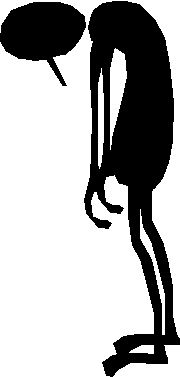Pain is very often viewed as a problem that needs to be fixed.
I've had the opportunity to bear witness to others' journeys as well as engage in my own and I've noticed that when we try to fix that which causes us pain, a resistance emerges. We hold so tightly to that which we said we wanted to fix.
This set me on a search to understand this conundrum. What I discovered lead me to understand that it's time to change the paradigm on how we relate and work through pain.
Pain - the Teacher
It's true that pain is an indicator that something is out of alignment, something is wrong. But pain itself is not wrong. Pain is not bad.
Pain arises to teach us something about ourselves.
It's not something to be fixed. It's something to be felt.
If I interfere and "help / fix" this caterpillar's struggle, I am robbing her an opportunity to transform.
On a deep level, we all know this. So we hold tightly to our pain.
It's ours to transcend. And in doing so, we gain valuable insight that teaches us to fly. That's empowering!
Pain - Body, mind and Spirit
When we separate body, mind and spirit into three distinct categories, and address them separately, we miss the lesson.
“Everything you feel on the inside, will eventually manifest on the outside”
Let's imagine the posture of a person who's depressed.
They're slouching, head is dropped looking at the floor, shoulders are rounded. They have body aches and probably low energy.
What caused the pain? It's easy to see in this example that it's certainly not all physical.
Gaining insight into our movement patterns will make a difference in how we move, feel about ourselves and assist in reducing our pain levels.
But what about our belief systems, our thought patterns, the health of our relationships and any unprocessed stress or trauma.
All of this contributes to pain too.
“I have seen no evidence in my research that real transformation happens until we address all three as equally important parts of a whole, parts that are inextricably connected to one another, like a three-legged stool. ”
NAME THE PAIN
The road to pain-free isn't in the "trying" to feel better.
That's just by-passing pain. By-passing pain leads to escapist behavior like numbing or projecting it on someone else.
We must name our pain. We must shine a light on it.
Only then, will we truly know what we're dealing with.
Here's a three-step process to get you started:
- For now, try sitting with the discomfort of what is without trying to change it.
- Ask what this pain has come to teach you. Personally, I use a combination of journaling, dialoguing and meditation. I also very much enjoy Louise Hay's book that gives insight into the mental thought patterns behind physical pain.
- Once the lessons begin to reveal themselves, you can start making the necessary adjustments in your mental and spiritual life. This information will also assist you when working with a practitioner to create an effective strategy for healing the physical ailment.
But remember: First, the pain. Then then transformation.


